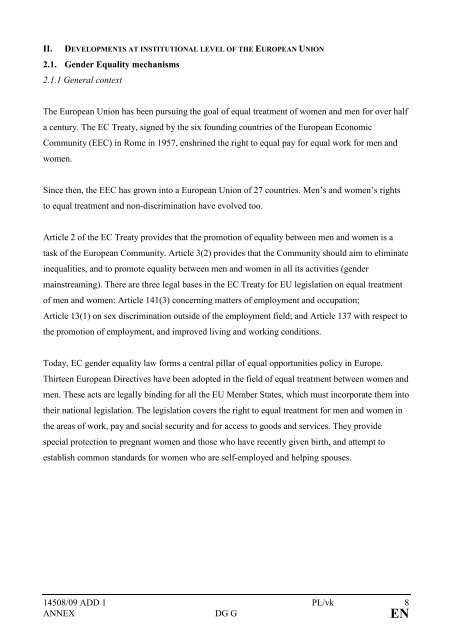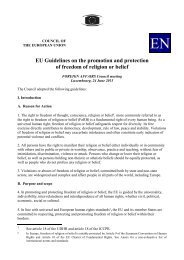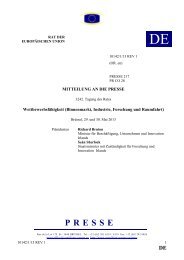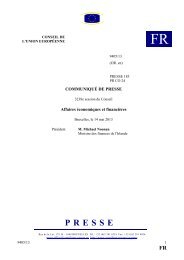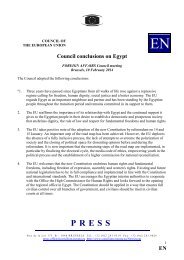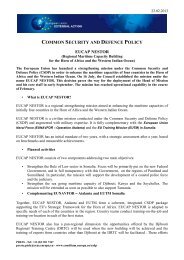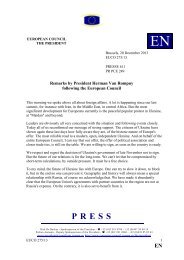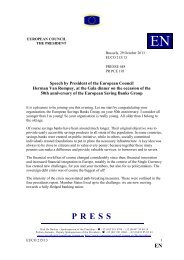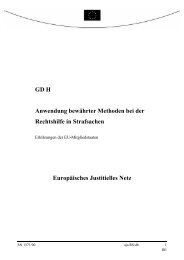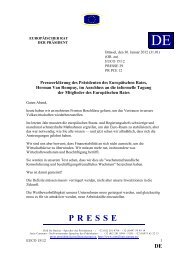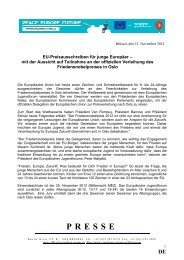14508/09 ADD 1 PL/vk 1 DG G COUNCIL OF THE ... - Europa
14508/09 ADD 1 PL/vk 1 DG G COUNCIL OF THE ... - Europa
14508/09 ADD 1 PL/vk 1 DG G COUNCIL OF THE ... - Europa
You also want an ePaper? Increase the reach of your titles
YUMPU automatically turns print PDFs into web optimized ePapers that Google loves.
II. DEVELOPMENTS AT INSTITUTIONAL LEVEL <strong>OF</strong> <strong>THE</strong> EUROPEAN UNION<br />
2.1. Gender Equality mechanisms<br />
2.1.1 General context<br />
The European Union has been pursuing the goal of equal treatment of women and men for over half<br />
a century. The EC Treaty, signed by the six founding countries of the European Economic<br />
Community (EEC) in Rome in 1957, enshrined the right to equal pay for equal work for men and<br />
women.<br />
Since then, the EEC has grown into a European Union of 27 countries. Men’s and women’s rights<br />
to equal treatment and non-discrimination have evolved too.<br />
Article 2 of the EC Treaty provides that the promotion of equality between men and women is a<br />
task of the European Community. Article 3(2) provides that the Community should aim to eliminate<br />
inequalities, and to promote equality between men and women in all its activities (gender<br />
mainstreaming). There are three legal bases in the EC Treaty for EU legislation on equal treatment<br />
of men and women: Article 141(3) concerning matters of employment and occupation;<br />
Article 13(1) on sex discrimination outside of the employment field; and Article 137 with respect to<br />
the promotion of employment, and improved living and working conditions.<br />
Today, EC gender equality law forms a central pillar of equal opportunities policy in Europe.<br />
Thirteen European Directives have been adopted in the field of equal treatment between women and<br />
men. These acts are legally binding for all the EU Member States, which must incorporate them into<br />
their national legislation. The legislation covers the right to equal treatment for men and women in<br />
the areas of work, pay and social security and for access to goods and services. They provide<br />
special protection to pregnant women and those who have recently given birth, and attempt to<br />
establish common standards for women who are self-employed and helping spouses.<br />
<strong>14508</strong>/<strong>09</strong> <strong>ADD</strong> 1 <strong>PL</strong>/<strong>vk</strong> 8<br />
ANNEX <strong>DG</strong> G EN


